Qualcomm says its Snapdragon Elite benchmarks show Intel didn't tell the whole story in its Lunar Lake marketing
Qualcomm fires back from its Snapdragon Summit in Maui.
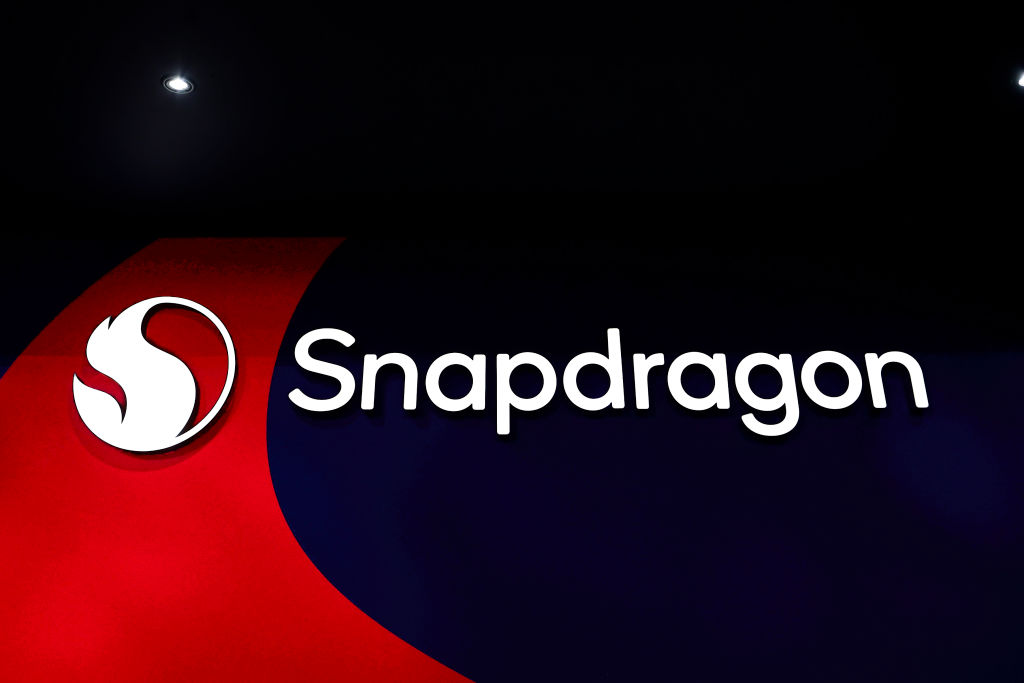
At its Snapdragon Summit in Maui, Qualcomm is taking Intel to task. The company, which released its Snapdragon X processors over the summer, is using its home turf to claim that its chips are faster than Intel's newly released Intel Core Ultra Series 2 "Lunar Lake" processors, and suggested that Intel didn't tell the whole story in its marketing.
Qualcomm presented a series of benchmarks; Some of them were repeats of what we've seen before, now with Lunar Lake (and AMD's Strix Point) added, while others were designed specifically to disprove Intel's claims that Lunar Lake offers "the fastest CPU cores. Period."
Of course, Qualcomm's tests featured some of its own cherry picking, but you can already compare Qualcomm and Intel's latest in a number of our independent reviews, including in the same chassis in the Dell XPS 13 (9345) and Dell XPS 13 (9350).
Performance per watt
Qualcomm updated charts detailing performance compared to the competition, showing the Snapdragon X1E-84-100 beating Intel's Core Ultra 7 Series 2 256V by up to 10% at Geekbench single-core, while Intel's chip requires 38% more power.
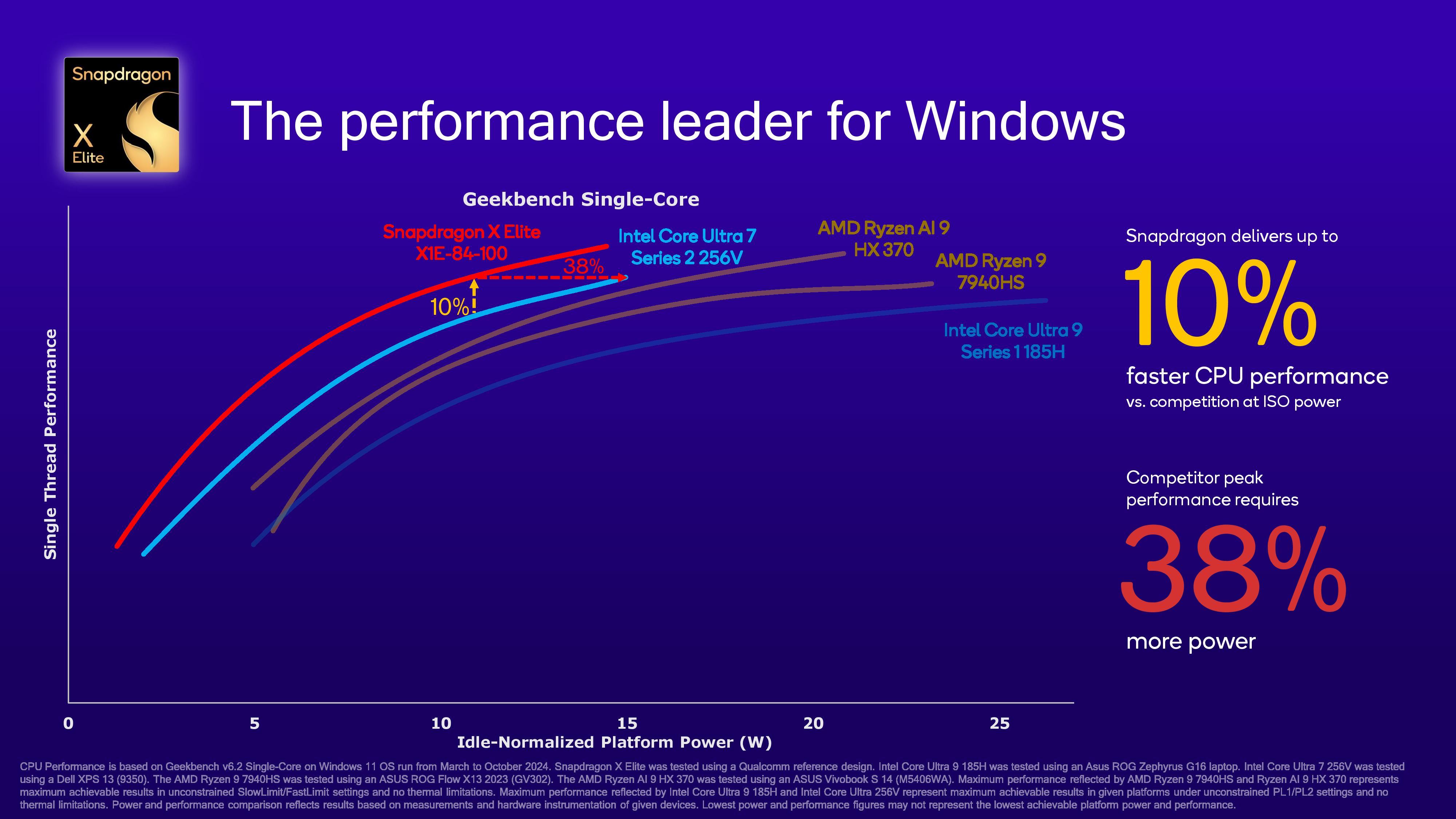
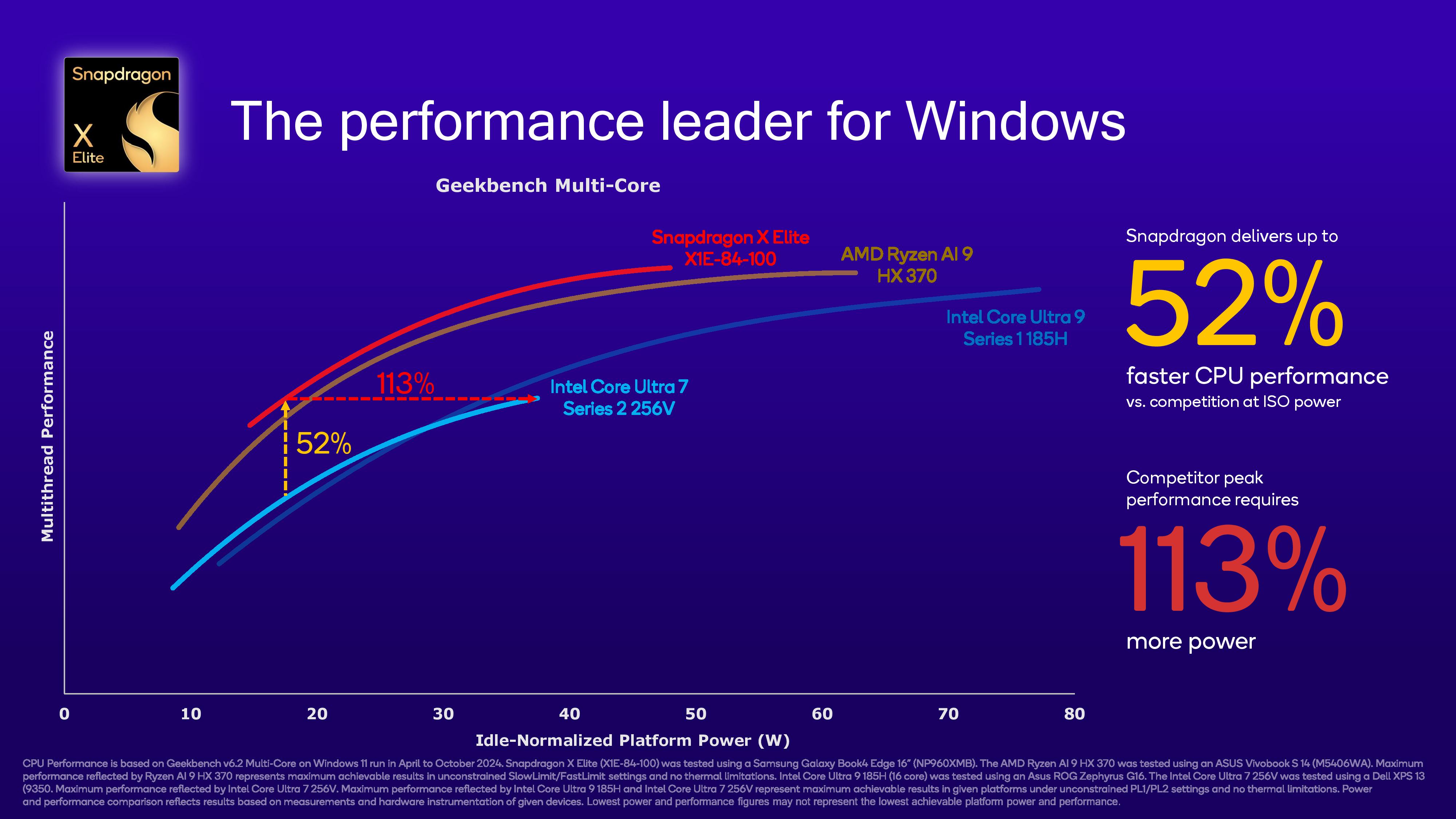
In multi-core, Qualcomm claims its X1E-84-100 is up to 52% faster, with Lunar Lake requiring up to 113% more power.
Notably, Qualcomm isn't using the top configuration of the Intel Core Ultra Series 2 platform, the Core Ultra 9 288V, suggesting it couldn't find it at retail. We haven't seen that chip for sale in the United States, but we do know you can get it in versions of the Asus Zenbook S 14 being sold in the UK.
Additionally, the Intel chip is being tested in a Dell XPS 13, while the Qualcomm chip is from a larger, 16-inch Samsung Galaxy Book 4 Edge (the only system that the X1E-84-100 come in). These do lead to a difference in heat dissipation, given the different size of the systems.
The fastest cores. Question mark?
On a call with journalists ahead of the Summit, Qualcomm director of engineering Sriram Dixit took issue with Intel saying that it offered "the "Fastest Cores. Period," with Lunar Lake.
For one, he said, Intel didn't include its fastest chip, the Snapdragon X Elite X1E-84100. So Qualcomm re-ran the tests including that chip. In the absence of an Intel Core Ultra 288V, Qualcomm used data from a PCWorld video. But Qualcomm also suggests that Intel "ignored" multi-core. One could argue that while Intel didn't highlight its multi-core benchmark results, that fastest cores means individual CPU cores, not multiple cores together. Regardless, Qualcomm is using this as an opportunity to show that it wins out there.
Get Tom's Hardware's best news and in-depth reviews, straight to your inbox.
Where Intel used percentage, Qualcomm used raw scores, though it's interesting to see that Qualcomm didn't label the scores for the X1E-78-100, X1E-80-100, and AMD Ryzen AI HX 370.
In Cinebench 2024 single-core, Qualcomm showed the X1E-84-100 eking out a win against the Intel Core Ultra 288V by 3 points (using the PCWorld data) and the Core Ultra 256V by 7 points. It's interesting here that Qualcomm switched to a Samsung Galaxy Book 5 Pro 360 for the 256V, as opposed to the XPS 13 it used almost everywhere else.
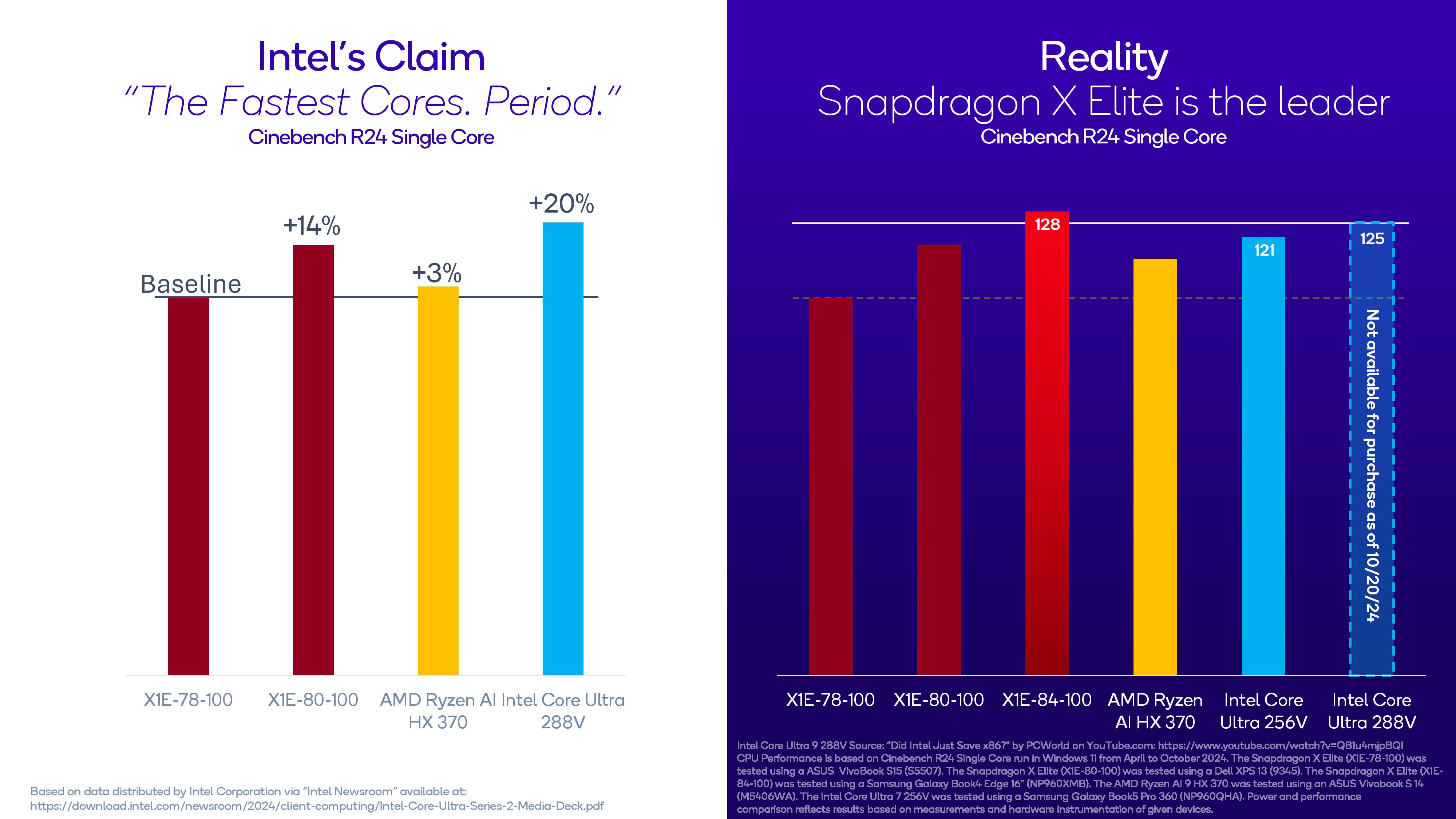
If you focus on two laptops in the same chassis: The Snapdragon X Elite X1E-80-100 and Intel Core Ultra 7 256V were both in an XPS 13. Qualcomm claims its 12-core chip is 92% faster than Intel's latest 8-core CPU. Qualcomm says that Intel "ignored" multi-core.
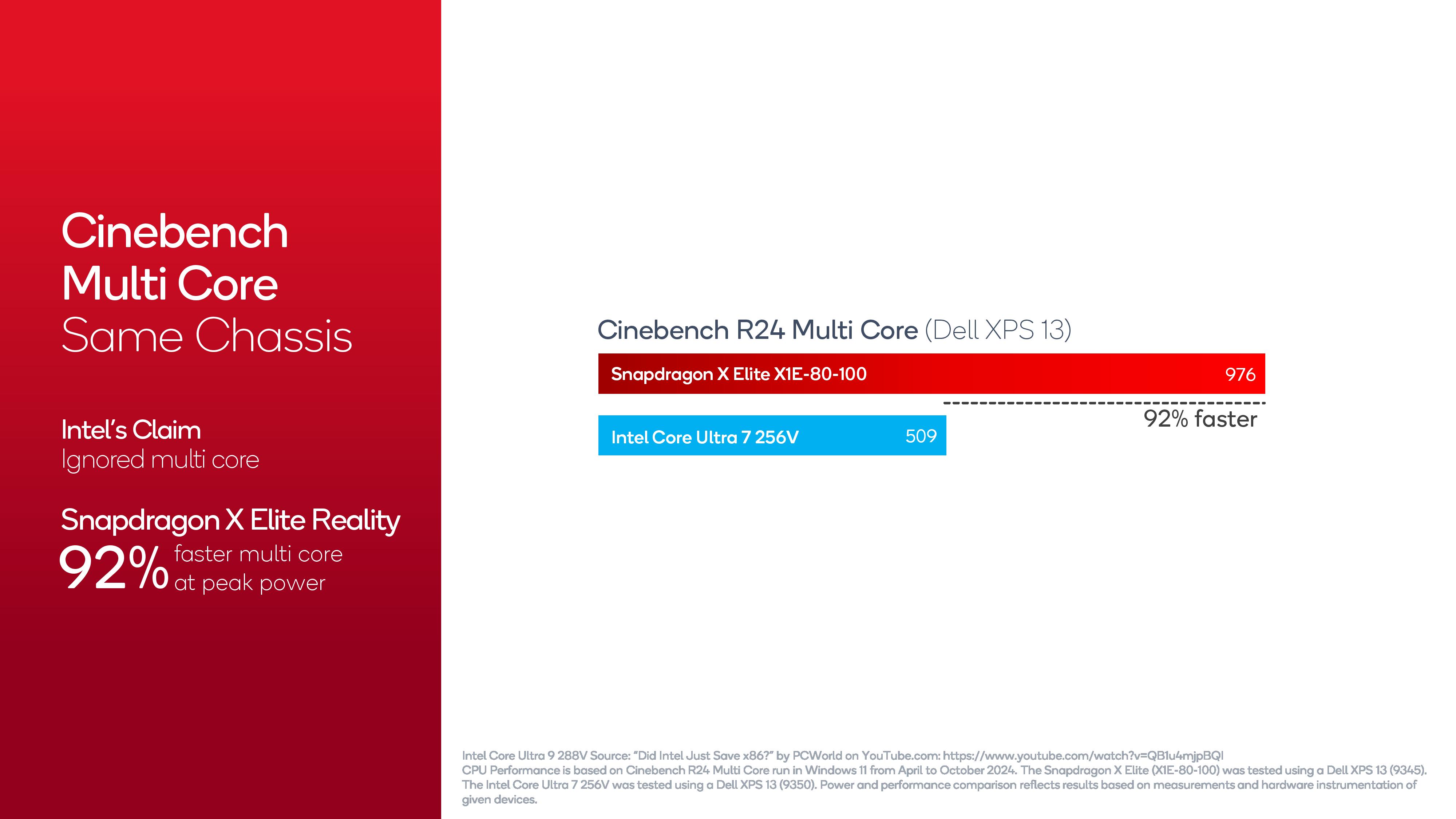
On the Geekbench 6 single-core test, Qualcomm again says that adding in the X1E-84-100 makes it the victor.
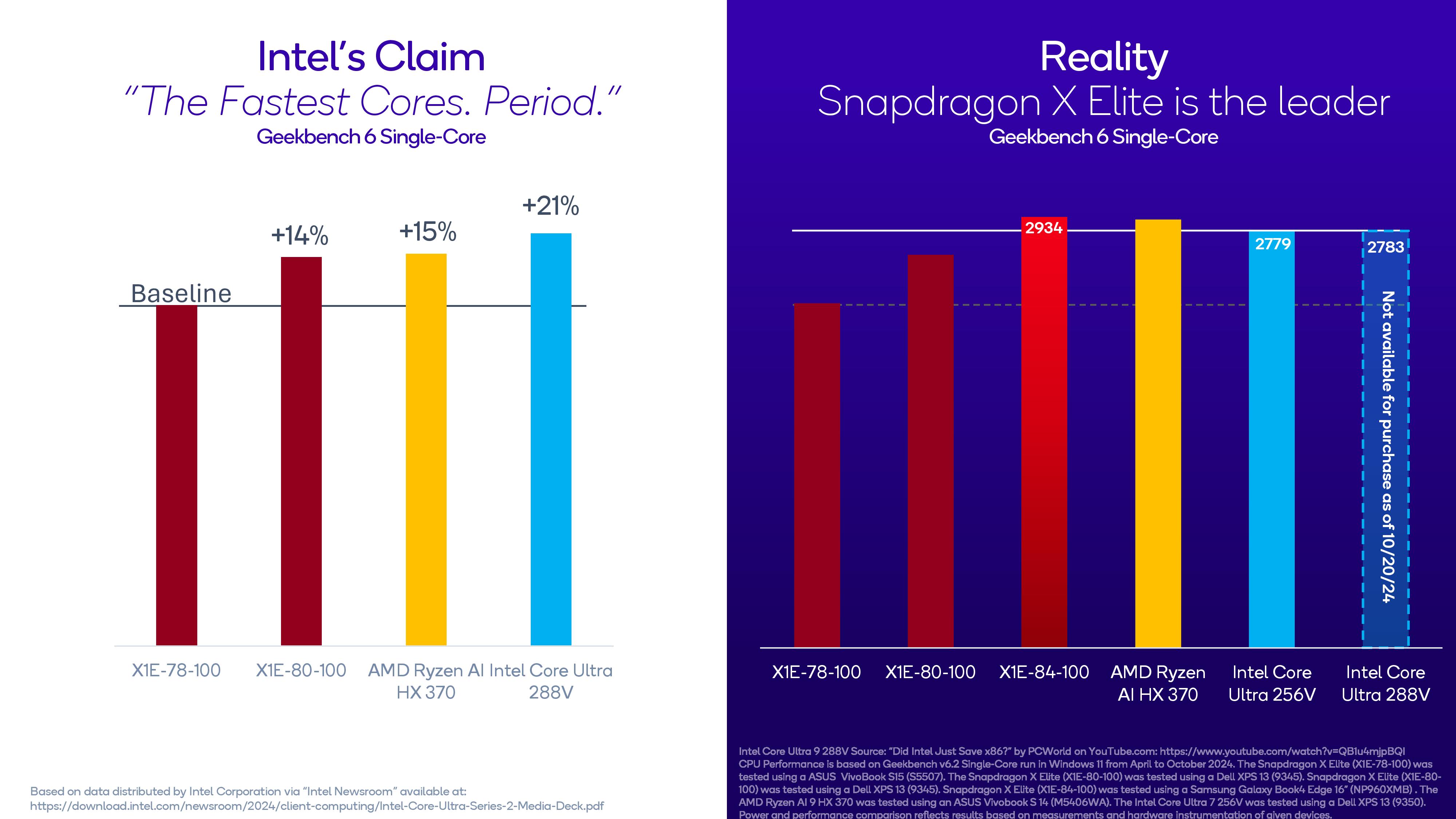
In Geekbench 6's multi-core benchmark, Qualcomm claimed its top chip was 44% faster than Lunar Lake. In fact, it says its 8-core X1E-42-100 was faster.
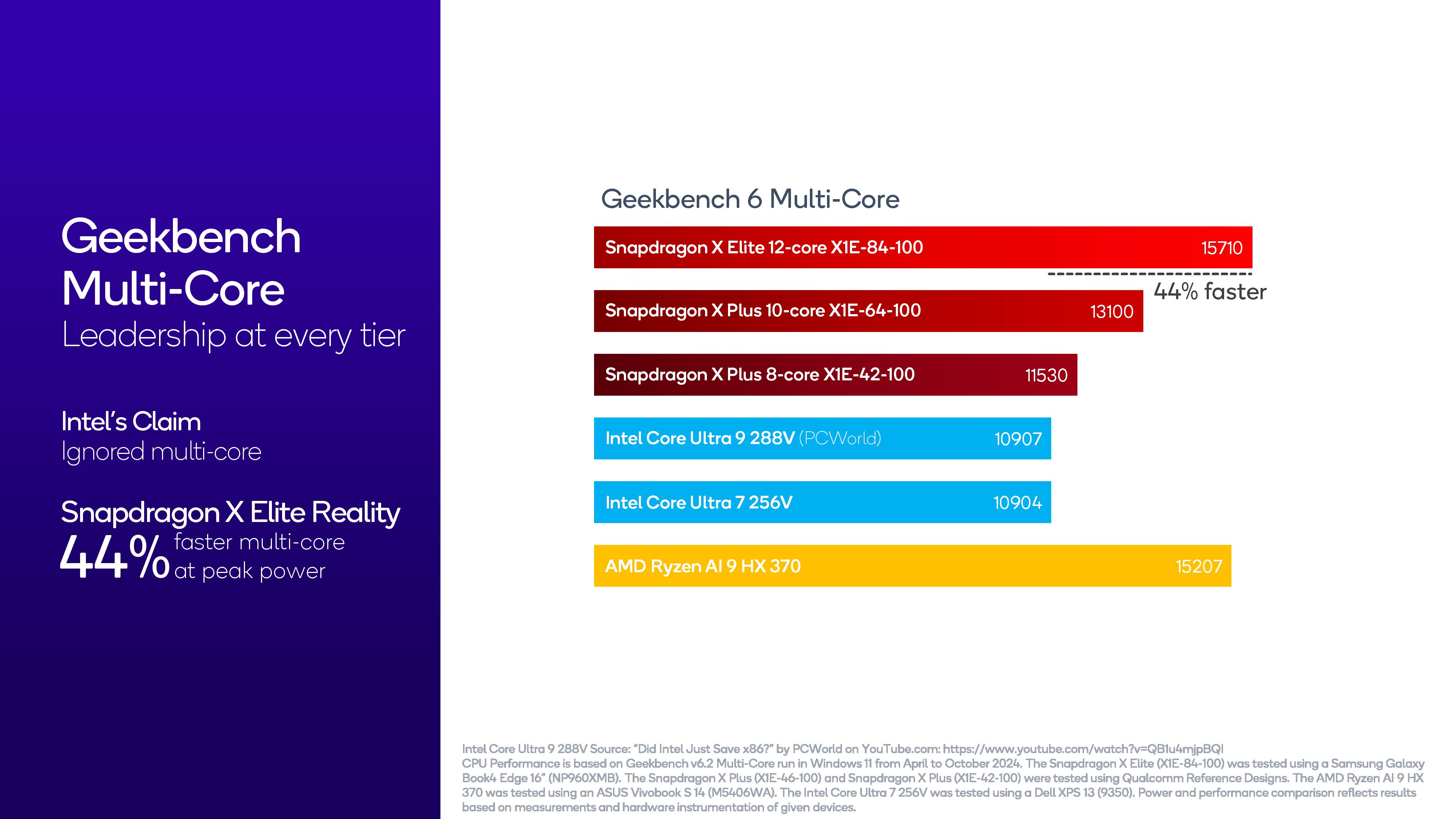
For what it's worth, in our own testing, we have often seen Qualcomm's chips do ever-so-slightly better in single-core Geekbench compared to Lunar Lake, while the 12-core Snapdragons have continued to beat the 8-core Lunar Lake chips. (More cores helps with that!).
Lastly, there was SPECint, which Qualcomm says it couldn't reproduce. The company claims that Intel didn't disclose the compiler configuration used to get these results. In its own results, using LLVM 17.0.6 and G Fotron 13.2 with the "-03 -flto" flags in WSL1, which it calls "common" with "standard optimizations." That led to two of Qualcomm's chips coming ahead of the Core Ultra 256V (back in the XPS 13, if you've been tracking that), while no data was presented for the Core Ultra 288V.
Qualcomm took special issue with Intel's claim that it used 40% less power at equal performance to the Snapdragon. With Qualcomm's compiler, it says it hit a 52% higher score than the 256V using the X1E-80-100 at peak power, and a 41% high score using equal power.
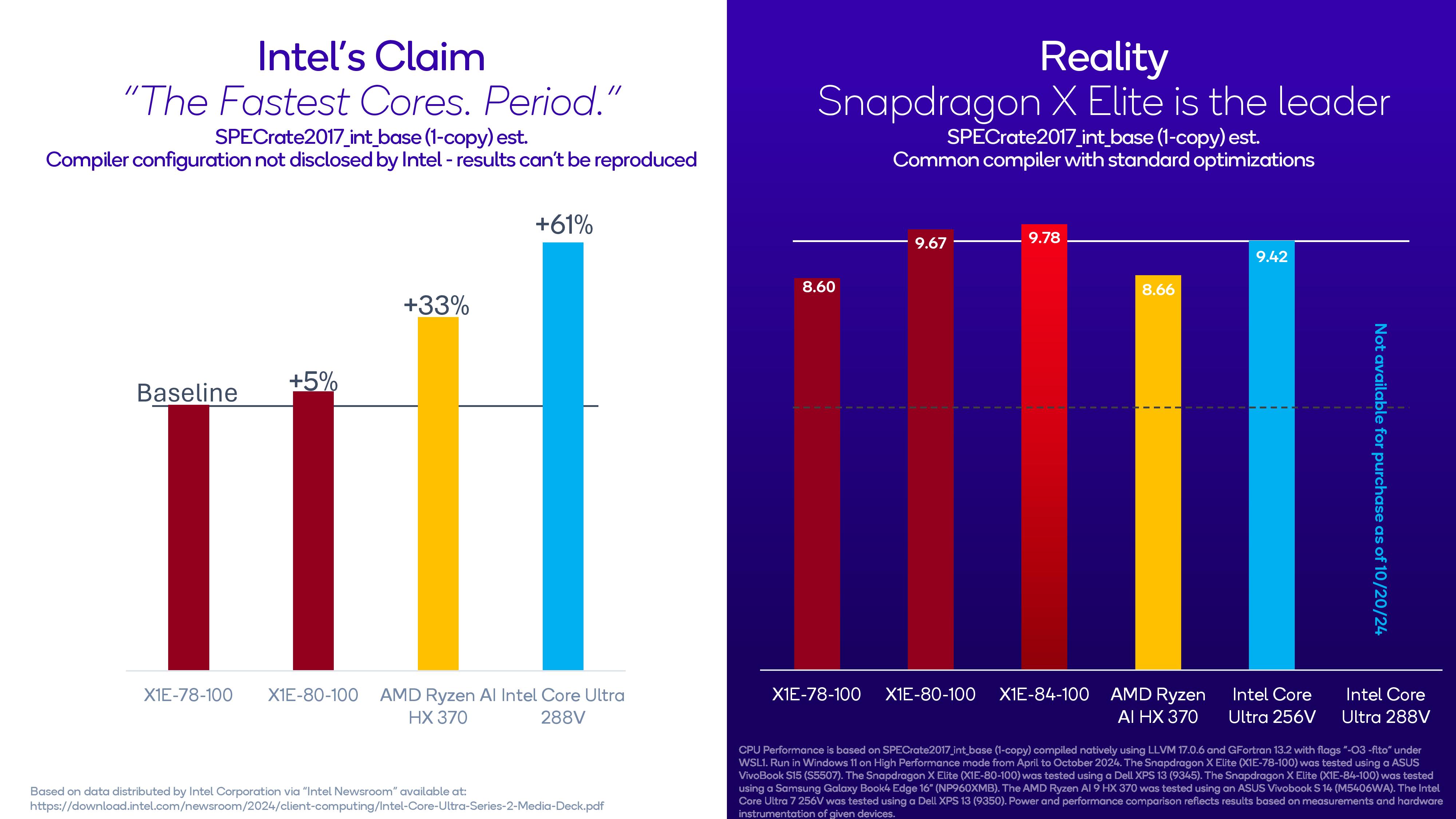

Performance on battery
For battery performance, Qualcomm switched exclusively to the Dell XPS 13 (9345) using Snapdragon X Elite X1E-80-100 and the Dell XPS 13 (9350) with Intel Core Ultra 7 256V. While Qualcomm used its most powerful chip for performance testing, that didn't translate to battery testing.
Qualcomm suggested that in most cases, the X Elite's performance on battery was similar to performance while plugged in. For the Core Ultra, though, Qualcomm's benchmark showed it often dropping further, slowing down while unplugged to preserve battery life. Qualcomm claims it's as much as 163% faster (citing Blender's CPU benchmark) on battery.
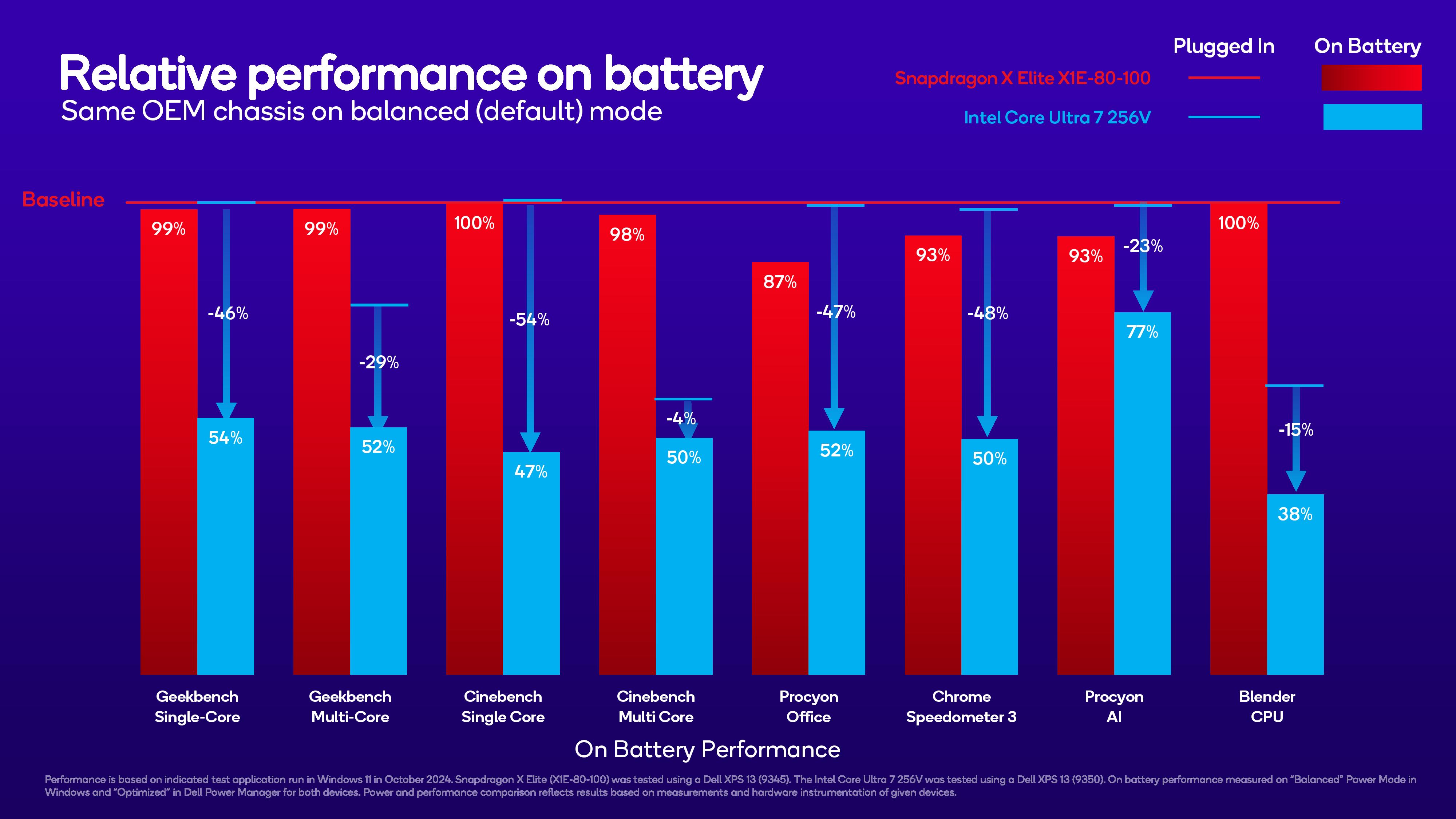

Qualcomm also teased what its second-gen Oryon cores could do in this area in the future. At the Summit, the company is announcing its Snapdragon 8 Elite processor for Android smartphones. In this chart, Qualcomm put it in a reference laptop running Windows 11, showing faster single-core and Web browsing performance than Intel, AMD, and the existing Snapdragon X Elite. With fewer cores, Snapdragon 8 Elite didn't beat the 12-core X Elite X1E-80-100 in testing. (The Ryzen AI 9 HX 370 is also a 12-core chip, while every Lunar Lake chip has 8 cores).
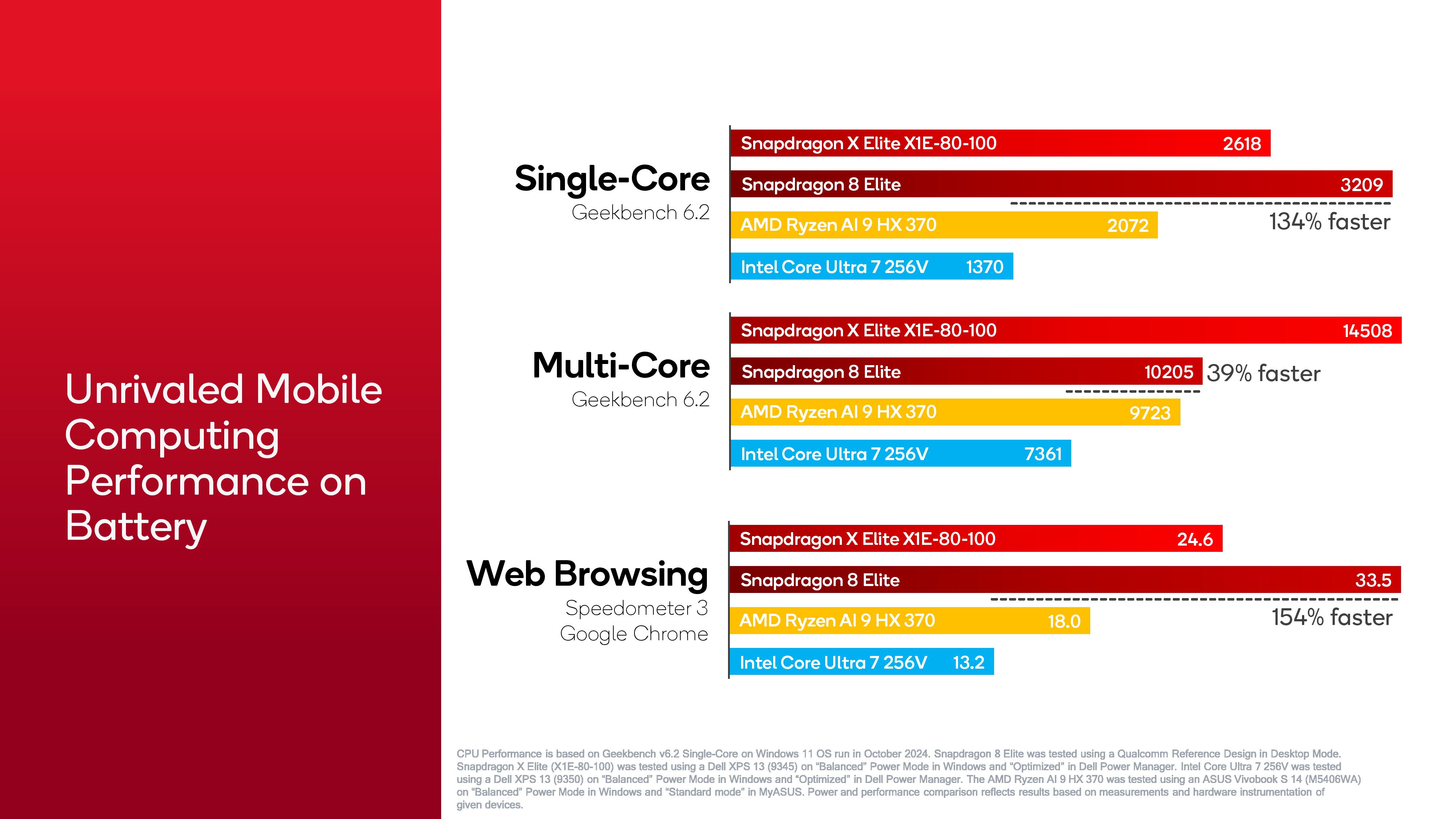
For battery testing, Qualcomm used the Procyon Office benchmark, and said it gets four and a half hours longer battery life than the Core Ultra 7 256V. For what it's worth, Snapdragon chips have outperformed in our own battery life tests, though not by as wide a margin. With our XPS 13 units, we saw the Snapdragon version last 19:31, compared to 17:29 for the Lunar Lake version.
Qualcomm is also claiming that its chips use less power when running everything from local video playback to web browsing and Teams calls. Qualcomm also claims that the Snapdragon has a far more efficient NPU, suggesting that Intel's 47-TOPS chip uses 311% more power running the Procyon AI test. However, in a Q&A session, Qualcomm said it only measured battery use from the system itself, rather than isolating the NPU, making this a dubious test.
The company also measured surface temperature during NPU workloads, suggesting its chips run up to 9 degrees Celsius cooler while plugged in and using the NPU and up to 7 degrees cooler on battery.
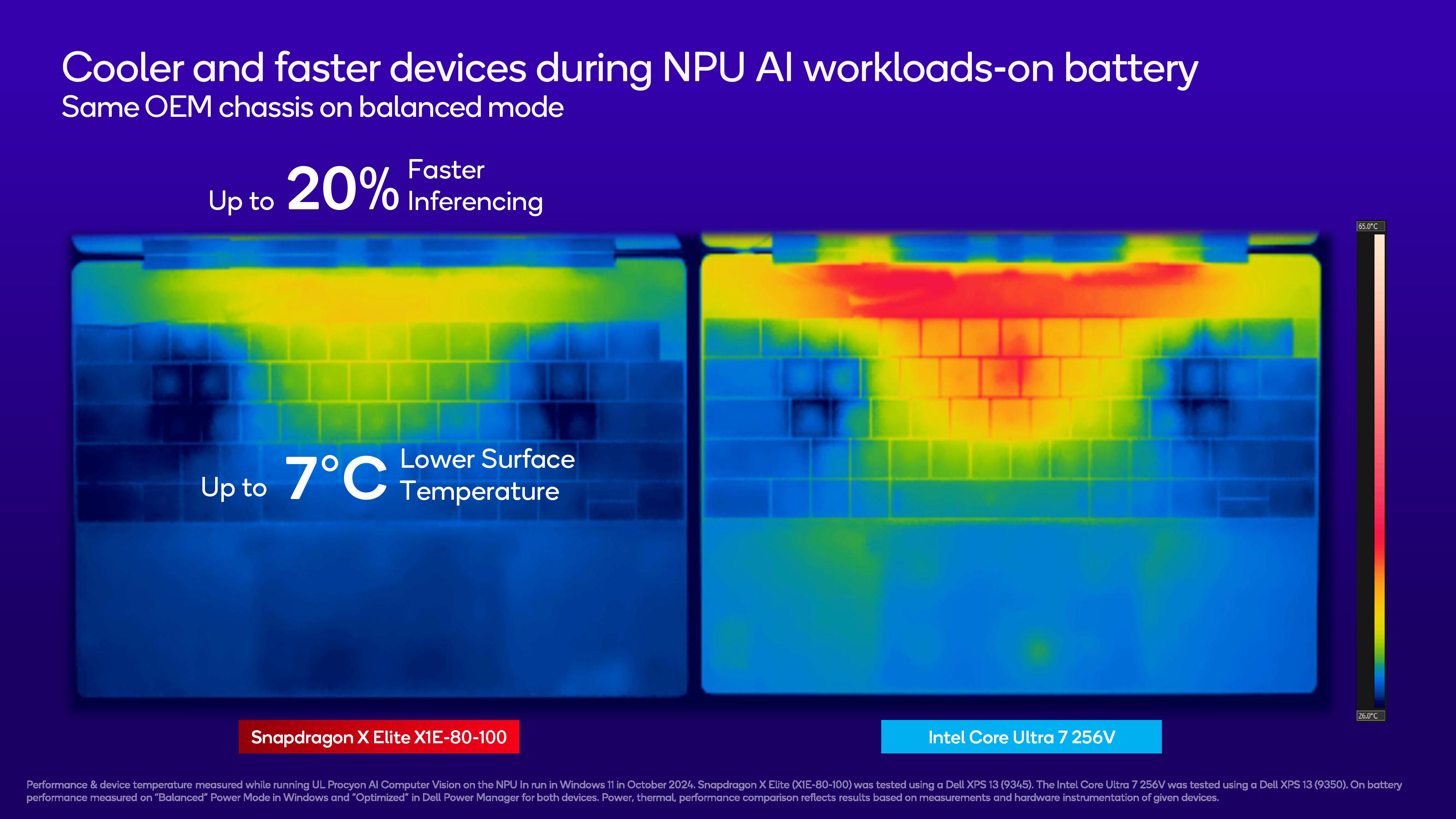
Qualcomm strikes back
In general, you should always wait for independent benchmarks (ours and our colleagues in the space) as opposed to relying on what you get from chip companies. Qualcomm's in a bit of a weird space here, as we've already tested their chips compared to Lunar Lake, and in most cases, we have seen better performance from Snapdragon X Elite.
But Qualcomm's benchmarks here do have some cherry-picked aspects of their own, including switching between different chips for high-end performance testing and efficiency on battery, as well as putting competitors' chips in different laptops depending on the scenario.
It also doesn't address the biggest issue for Qualcomm: compatibility. Dixit didn't discuss that issue, including how emulation might affect performance and power efficiency, nevermind the fact that it canceled its developer kit meant to lead to more Arm applications.
So yes, Qualcomm is reminding us that it has a performant laptop chip. But now it has to keep it up, and also get even more serious about compatibility, where x86 still reigns.

Andrew E. Freedman is a senior editor at Tom's Hardware focusing on laptops, desktops and gaming. He also keeps up with the latest news. A lover of all things gaming and tech, his previous work has shown up in Tom's Guide, Laptop Mag, Kotaku, PCMag and Complex, among others. Follow him on Threads @FreedmanAE and BlueSky @andrewfreedman.net. You can send him tips on Signal: andrewfreedman.01
-
Notton I posit that they are both lying, or fudging the numbers.Reply
Still doesn't change the fact X Elite laptops are $400 to 800 too expensive in general. -
CelicaGT Both Intel and AMD better be working on ARM offerings, this is coming whether we like it or not. The marketing engine is strong this time around, and Qualcomm isn't to be trifled with.Reply -
setx "Qualcomm vs Intel" can be safely ignored, but "Intel vs AMD by Qualcomm" looks interesting.Reply
lolCelicaGT said:Both Intel and AMD better be working on ARM offerings
The marketing engine is strong this time around
ARM's marketing engine is as strong as usual, but that's pretty much all they have. -
CelicaGT Reply
I'm not talking about ARM, but Qualcomm and Microsoft. Their effort in the past was lukewarm, but this latest one proves they have the ability to provide a compelling product at a competitive price. If the market is ready then it will take off. Compatibility seems to be an issue at times, but as the switch from Intel to ARM on the Apple side proved, it's only a matter of time before the bugs are ironed out, at least with the main productivity providers.setx said:"Qualcomm vs Intel" can be safely ignored, but "Intel vs AMD by Qualcomm" looks interesting.
lol
ARM's marketing engine is as strong as usual, but that's pretty much all they have. -
thestryker Reply
Microsoft did the heavy lifting for Qualcomm on marketing so we'll see if it pays off or if there was another reason behind them doing it. The Qualcomm random compatibility problems are somewhat similar to that of Intel Arc: you never know when they might happen or what the impact might be. That makes them an asterisk recommendation until this is resolved.CelicaGT said:Both Intel and AMD better be working on ARM offerings, this is coming whether we like it or not. The marketing engine is strong this time around, and Qualcomm isn't to be trifled with.
I certainly won't be ruling Arm out, but it'll take more than just Qualcomm to impact things on the client side. -
CelicaGT Reply
Agreed, more or less. I feel the current offering is targeted directly at businesses, and will trickle down from there. The $32B corporation I work at is already looking at trialing the Latitude 7455 versions for the officey folks. We will see.thestryker said:Microsoft did the heavy lifting for Qualcomm on marketing so we'll see if it pays off or if there was another reason behind them doing it. The Qualcomm random compatibility problems are somewhat similar to that of Intel Arc: you never know when they might happen or what the impact might be. That makes them an asterisk recommendation until this is resolved.
I certainly won't be ruling Arm out, but it'll take more than just Qualcomm to impact things on the client side. -
thestryker Reply
I'm not sure if they've resolved it yet, but they weren't compatible with all of the major VPNs. There's also not a compatible version of Google Drive yet (supposed to be coming this year) both of which are barriers to larger corporate adoption.CelicaGT said:Agreed, more or less. I feel the current offering is targeted directly at businesses, and will trickle down from there. The $32B corporation I work at is already looking at trialing the Latitude 7455 versions for the officey folks. We will see. -
CelicaGT Reply
We're all MS in house, any and all Google products are banned and are planned to be blocked on corporate networks in the near future. Of course, Copilot is now allowed via 365 on Win10 (with restrictions, and one has to do an online course to get approval for use.) *groan* . As for the VPN we use Cisco Anyconnect, and a quick search indicates a mixed bag for ARM64. I didn't dig much deeper than some MS articles and one Reddit. It should be interesting either way. Personally I'm vouching for whatever allows me to continue my hobby as a PC enthusiast, and I'm not convince an ARM future includes that.thestryker said:I'm not sure if they've resolved it yet, but they weren't compatible with all of the major VPNs. There's also not a compatible version of Google Drive yet (supposed to be coming this year) both of which are barriers to larger corporate adoption. -
setx Reply
The problem is market never asked for such a thing. No one (in market-significant quantities) asked for Windows on non-x86. No one wants Windows as OS (and especially Windows 11) – people have to use it for compatibility with their software. So the whole Windows-on-ARM makes sense only for MS and Qualcomm, not the customers.CelicaGT said:I'm not talking about ARM, but Qualcomm and Microsoft. Their effort in the past was lukewarm, but this latest one proves they have the ability to provide a compelling product at a competitive price. If the market is ready then it will take off.
Apple is a very different case. Apple completely controls the software ecosystem so the actual switch was from "old-Apple" to "new-Apple". They could've switched to anything else than ARM and nothing would change.CelicaGT said:Compatibility seems to be an issue at times, but as the switch from Intel to ARM on the Apple side proved, it's only a matter of time before the bugs are ironed out